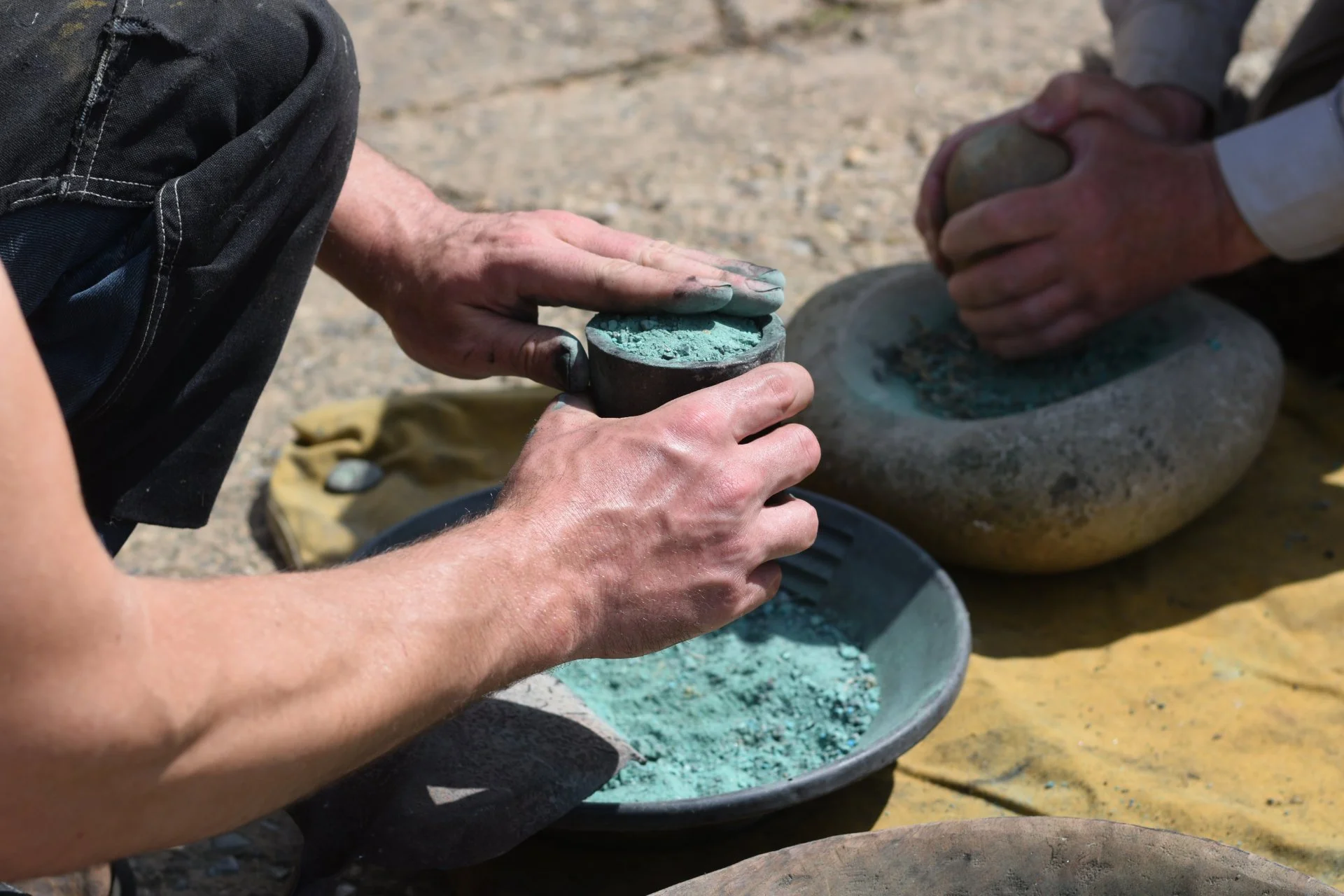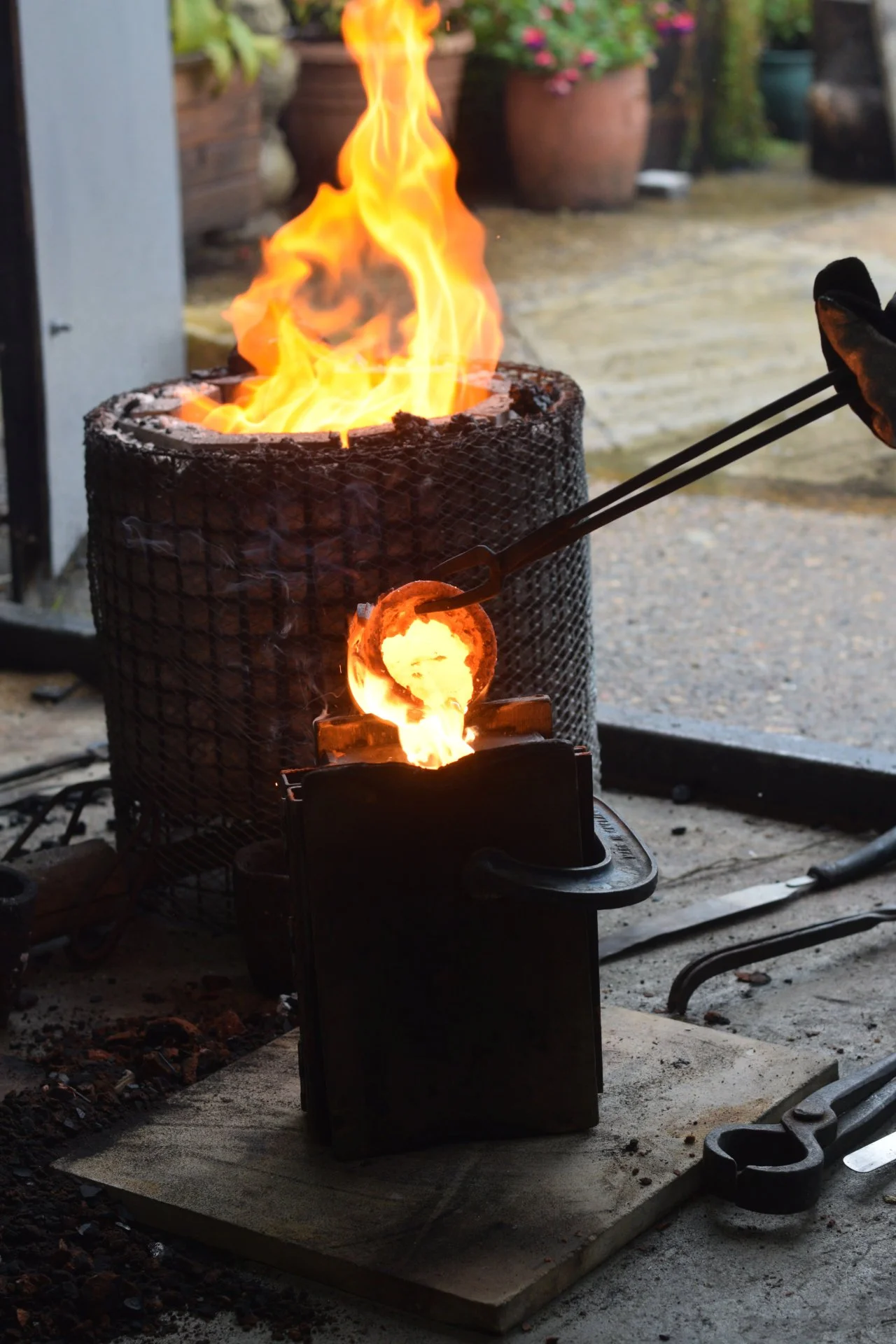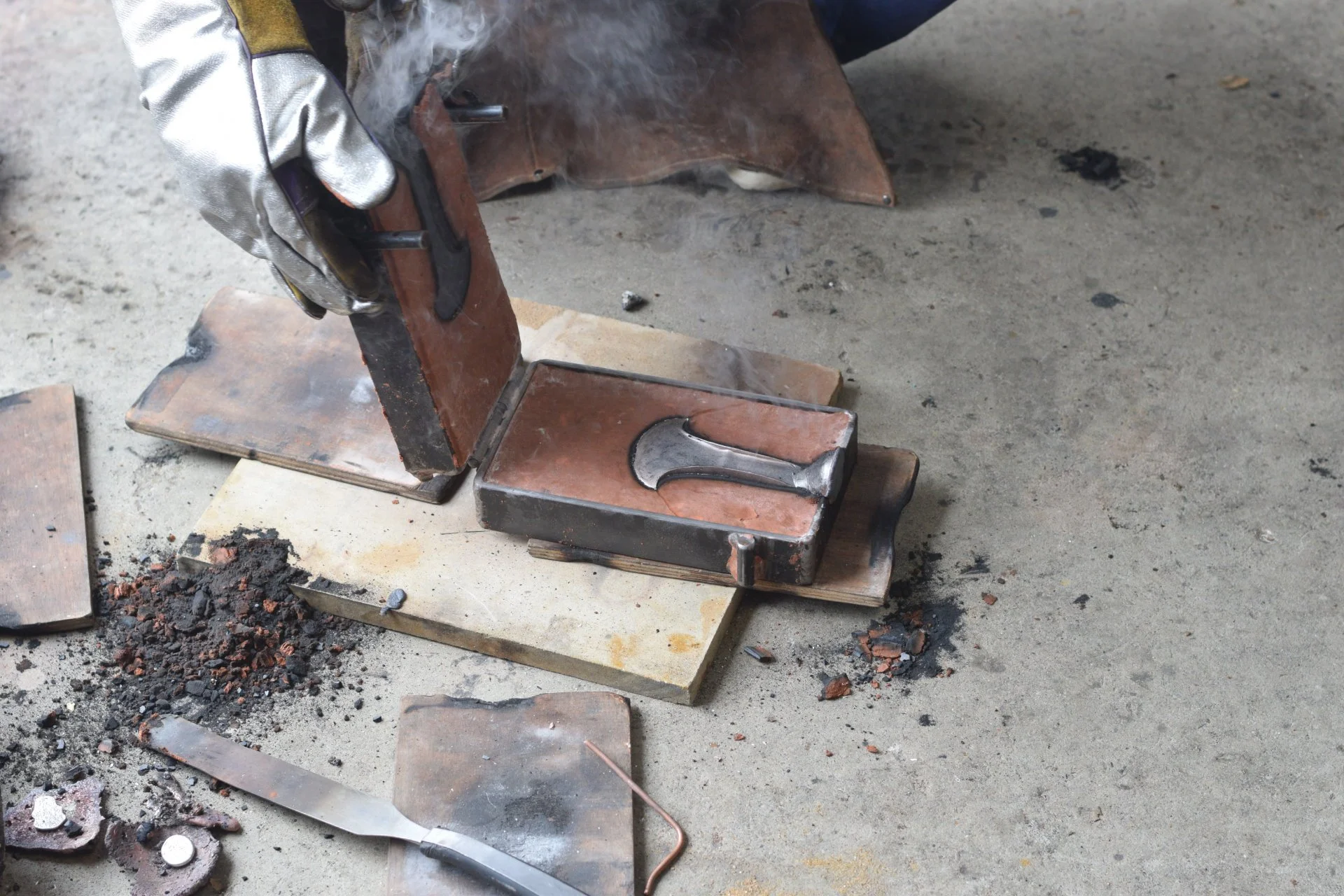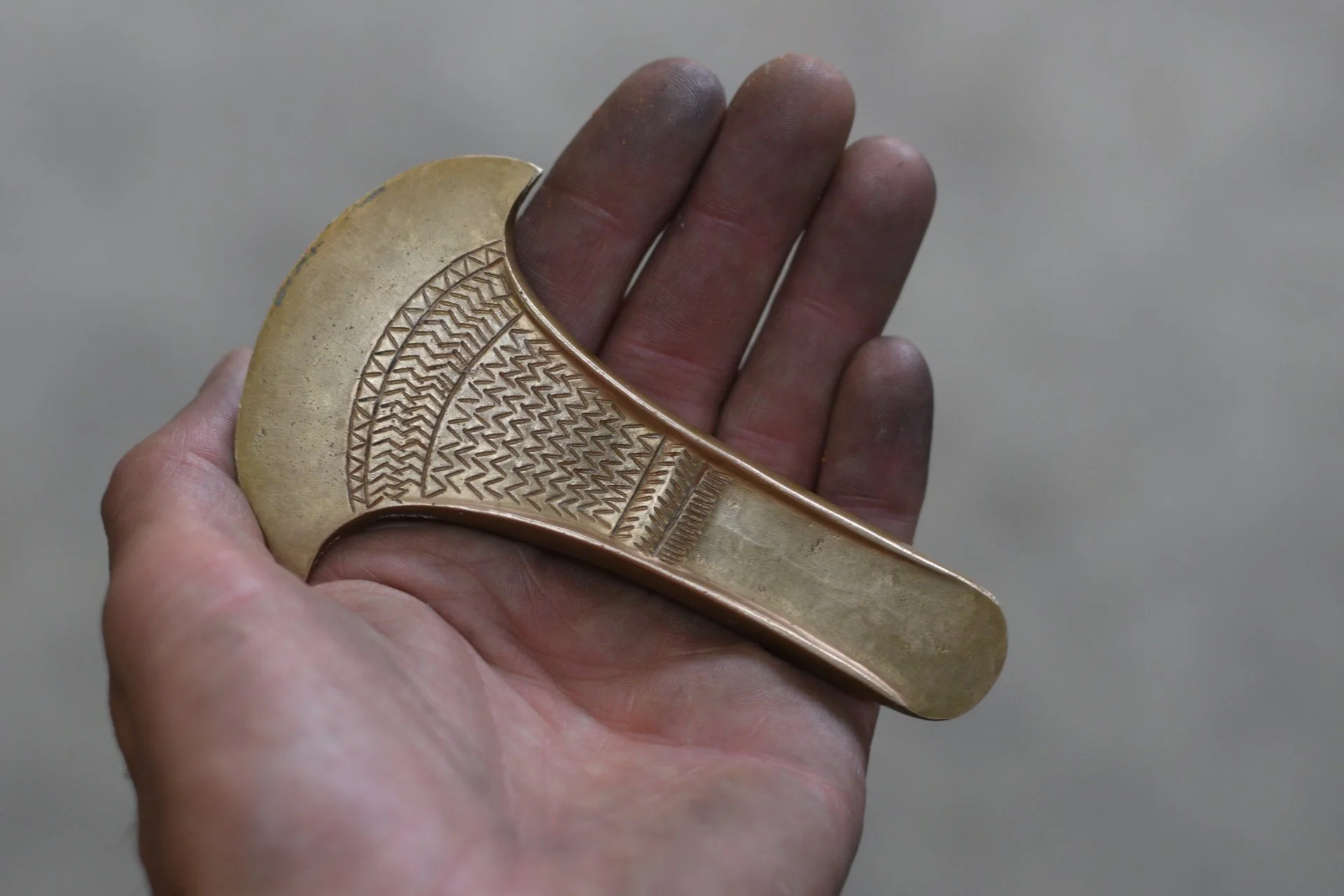Forging History: A Modern-Day Journey into Ancient Craft
Processing malachite and charging crucible for smelting
Last weekend, I traded modern tools for ancient ones and embarked on an incredible journey with Ancient Craft, led by the brilliant Dr. James Dilley. We didn't just passively learn about history; we actively engaged with it, taking part in a copper smelting workshop designed to reproduce the ancient process in a sympathetic and hands-on way, all based on James's expert study of the archaeological record.
From the very beginning, this was a collaborative experience. James fostered a learning environment where we were encouraged to share ideas and ask questions. We started by crushing and processing malachite, the beautiful green ore that held the key to copper for our ancestors. Then came the real magic: smelting. We fired up two furnaces, exploring different techniques. In one, we used a crucible, while the other was a reproduction of an earlier process, where the ore was smelted directly in the center of the furnace. Watching as the heat transformed the crushed rock into a glowing liquid, just as it would have thousands of years ago.
Pouring globs of copper smelted from malachite
The process didn't stop there. We reprocessed the raw copper, using a quern and grinding stone to remove the slag and impurities. This wasn't about a quick fix; it was a meticulous, step-by-step process that highlighted the immense dedication required to produce a usable metal. Then, to truly forge a piece of history, we melted our refined copper and added some Cornish tin to create bronze.
With our newly made bronze ready, we moved on to the final, awe-inspiring step: casting. Using pre-cast axes, we made sand moulds. The moment we poured the molten bronze into these moulds was truly unforgettable. We were no longer just participants; we were a small part of a chain of craftspeople stretching back millennia, using the same fundamental techniques.
This experience drove home a powerful truth: the discovery and development of bronze was no accident. It was the result of immense knowledge, experimentation, and a deep understanding of materials. The cultural and social implications of this early metal production are vast, and I now have a much deeper appreciation for the complexity of those pioneering days. As a material I interact with daily, this course will undoubtedly have a deep and lasting impact on my work. It’s a reminder that every piece of metal, no matter how small, tells a story of human innovation and perseverance.
Reproduction axe cast and finished by Dr. James Dilley













